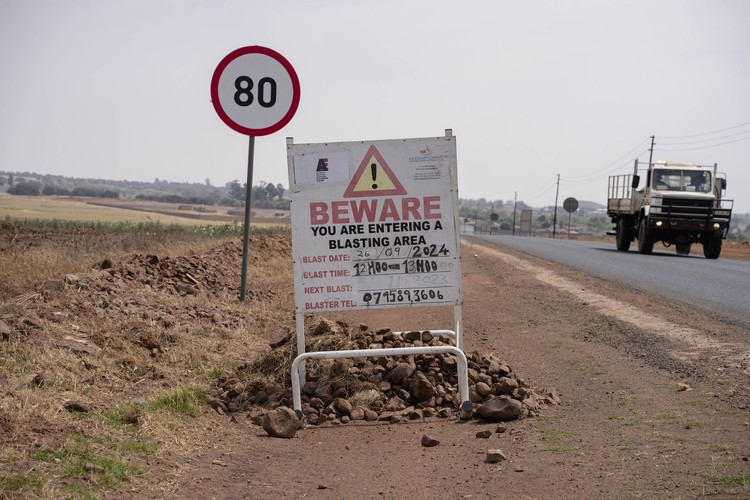
8 October 2024
The Department of Minerals and Energy has released new limits which mines must follow before blasting. Archive photo: Ihsaan Haffejee
After years of pressure from communities affected by blasting the Department of Mineral Resources and Energy has released new legal requirements for mines.
Thousands of people across the country have been living in danger from blasting for years. Homes and fields have been left cracked and irreparably damaged from blasting impacts. Many people have been traumatised by continued ground and air shock waves generated by blasts.
Children are especially affected.
A teacher from a primary school located close to a mine in the coal-rich Newcastle region of KwaZulu-Natal told the Centre for Environmental Rights: “When they blast we can see the little ones running out of the classrooms from the fright, screaming and crying. Why don’t they warn the teachers about the blast, then the children can be prepared? It would be so easy to do. A whole generation is being traumatised unnecessarily here.”
In August 2024, the Chief Inspector of Mines, David Msiza published new standards for mine blasting operations. These standards will be effective from 1 November 2024, giving mining companies three months to prepare.
Officially referred to as a “Guideline for a Mandatory Code of Practice for Minimum Standards on Ground Vibrations, Noise, Air-blast and Flyrock near Surface Structures and Communities to be Protected” these new legal requirements are a step forward for communities who for decades have suffered damage to property and serious violations of their rights due to mine blasting.
Before these minimum standards, the Department of Mineral Resources and Energy used American blasting limits known as the USBM to guide “acceptable” levels for ground and air vibration shockwaves in South Africa. South Africa’s new minimum standards follow the USBM recommended levels. The standards take into account that houses of different strengths can withstand different blasting, and the ground vibration limits are lower for mud houses than for formal housing.
While the USMB standards were previously used as a guide, the newly published limits provide concrete, set levels over which mines may not blast. For instance, a mine’s blasting operations may no longer exceed the limit of 134 decibels for air vibration shockwaves outside a mining area.
Ten things to know about the new standards:
These guidelines are a step forward for communities. The new blasting standards recognise the harm which mine blasting causes to people, homes and property. Ultimately, the new standards should be measured against everyone’s constitutional right to live in an environment that is not harmful to health or wellbeing.
It is essential that everyone impacted by mine blasting is aware of these new blasting standards, that mines fully comply, and that authorities ensure the standards are implemented and enforced.
Views expressed are not necessarily those of GroundUp.